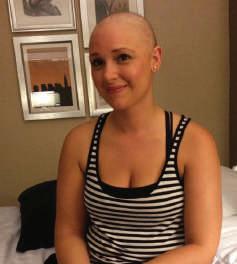
5 minute read
Veteran’s Corner Iron Man Louie Fierro
IRON MAN
LOUIE FIERRO
Advertisement
With over 38 years experience, Louie Fierro is the definition of veteran in our industry. He went to cosmetology school in the early 80’s, not for the love of the craft, but for the love of girls. However, that quickly changed when he realized the parallel between Hollywood and hairdresser, that the life of a hairdresser was pretty amazing. He started his career assisting the very talented Martin Parsons as he toured stages across Canada. Louie was famous for his big hair and bell bottom jeans as he passed bobby pins to Martin free of charge. His payment was the education he received. The industry has changed drastically, Louie says. When he started, he worked in a 15-chair salon learning perms, jerry curls and finger waves. He would do 10 perms a day – that doesn’t happen anymore. He would spend his evenings training and being inspired by the industry’s finest, like Michael Volpe, Robin Barker and the entire styling team at the infamous Yorkville salon Malcolm’s. It was an empowering moment, to have stylist learning from stylist in the purest and most direct form. He finds stylists now are working more independently, and that large salons are a thing of the past. While social media may be our future, where stylists are connected to education at any hour, they are more disconnected from each other than ever. Trade shows seem to be a thing of the past, which is very troubling, as stylists need each other to grow. Shows were a time to dress up, get drunk and be inspired, and were never to be missed. “I came from an era when everyone cared, and everyone needs that again. Louie is a well accomplished stylist, who now holds the title of Education Manager for Wahl Canada. He’s owned several salons and a colour distribution company. His goal has always been to educate. His advice to young stylists is that education is key, keep learning. And don’t follow… lead.

CANCER CARE THE HAIR & NOW

Cancer awareness is most recognized in the month of September. Unfortunately for 365 days a year both men and women battle the horrible disease. So if we as stylists can make the experience a little lighter
I can remember the day I noticed strands of hair on my pillowcase. I looked at it in disbelief. It made it all so real. I loved my hair. People loved my hair. I was known for my long thick strands.
My family reassured me that no matter what style I had, bald or a head full of hair; that I was beautiful. I knew deep inside my hair wouldn’t change who I was but it left a hollowing feeling in the pit of my stomach as each strand started to slowly leave my scalp.
“I’ll cut it for you,” my husband declared one day, “let’s just do it!” I knew it was best and it had to be done at one point or the other, but hearing the snip of the scissors cut away what was left was devastating and empowering all in one chop. And so it began… the treatment was taking its course… and taking my long charcoal locks with it.
The journey above is all too familiar in many Canadian homes. In June 2017 The Canadian Cancer Society reported that half of all Canadians are expected to get cancer and one and four Canadians will die of the disease. With these alarming rates and the inevitable side effect of hair loss during chemotherapy or radiation, the hair and beauty industries’ representation and role in the lives of their clients is significant and valuable throughout and after treatment.
The Princess Margaret Hospital Wig Salon and Boutique in Toronto reminds us that the “hair loss is only temporary. It will eventually grow back. There are things you (we) can do to prepare and cope with losing our (clients) hair.” Pretreatment: 1. Cut your client’s hair short – short haircuts hide the look of thinning hair and also can prepare the client for the feelings of less and less hair.
Amanda Sammut

2. Never shave the scalp – this may cause painful ingrowns to an already sensitive area. 3. Try on new wigs, hats, and scarves to add variety and style. During Treatment Chemotherapy is the treatment that destroys cancer cells, though normal cells are also destroyed. These normal cells can be found in the mouth, stomach, and hair follicles. The damage to these normal cells cause the side of effect of the hair follicles dying. 1. Suggest a mild or natural ingredient based shampoo for your clients to use, such as Aveda, Kevin Murphy, or Matrix Biolage RAW. 2. Help client to cut remaining hair as low as possible – for example quarter of an inch long. 3. Be gentle with your client’s scalp. Care From Stylists Every client’s experience with cancer is different, address each as an individual and not as group. Sensitivities may develop; hair patterns and texture may have changed. And most importantly, your client is not the same. Communication is key, as you will help them become comfortable with their new identity. Be sure to educate yourself on the on the different methods of post treatment care to best suit your clients needs.
Resources:
The Canadian Cancer Society
www.cancer.ca/en/about-us/ news/national
Princess Margaret’s Wig Salon & Boutique
Preparing for hair loss from cancer treatment.
By Nicole Trotter
Words From The Street
Amanda Sammut
Caledon ON Breast Cancer Survivor
How prepared were you for your hair loss during
your treatment? Once I came to the realization that I would eventually lose my hair I decided to first cut it shorter at first. As it started to fall out I decided to shave it all off to avoid the emotional trauma of watching it fall out day by day.
What helped you the most during the transition of hair loss
to hair growth? Mostly knowing that it was a temporary process.
Was your hair stylist sensitive to your needs before, during, and after your treatment?
Yes, my hair stylist was sensitive to my needs. I feel she was an integral part of my team. She would offer me massage treatments and help with styling tips and care as my new hair started to grow back.
What was your new hair growth beauty routine?
It started with embracing the new me, and getting used to the low maintenance my new growth required. My hair routine became simpler: it was basically a quick wash and style.
What advice would you give hair stylists to better support their clients pre and post treatment?
To just be patient, kind, and empathetic!








